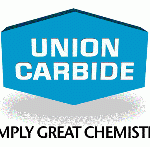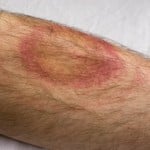Through my membership with the New Jersey American Industrial Hygiene Association (NJ-AIHA), I had the opportunity to make a presentation at the New Jersey Clean Air Councils (NJCAC) annual meeting on April 13 th. This particular meeting sounded intriguing as it would be focusing on a topic of great interest to me a technical dialogue on how to measure and identify the effect of air pollution (and other environmental stressors) on the cumulative health issues of the public. The meeting aimed to bring professionals from varying disciplines to discuss technical approaches, academic research and general opinions on how to reduce this pollution and therefore improve the health of the affected populations.
The meeting lasted a full day with contributing presentations from a dozen or so professionals. There were 15 NJCAC Board members at the meeting and 50+ attendees comprised of 11 presenters, NJDEP staff, and members of the public. As a presenter, we were each given about 20 minutes to make our points regarding specific urban populations that have inordinately higher exposure to air contaminants as compared to people living and working in cleaner urban, suburban and rural areas of the state. The majority of the presentations concluded that there are neighborhoods where pollution levels are chronically and significantly high. Presented evidence also linked higher incidences of illnesses and disease with these cumulative exposures to contaminants and other environmental (and social) stressors.
Bob Martin, the NJDEP Commissioner, gave an introductory presentation outlining current and future regulatory initiatives for reducing air pollution in New Jersey. One plan is to ban older diesel equipment in areas that do not have effective emission controls. Joe Suchecki, a representative of the Engine Manufacturers Association, correspondingly, presented convincing evidence that new diesel technology does not create air pollution problems. The trick now is to get all the older diesel equipment off all the roads and construction sites replaced by either new equipment or equipment retrofitted to control air emissions.
Ana Baptista, PhD, gave an excellent presentation on the high levels of pollution in the Newark Ironbound district and the resulting links to disease in the residential population resulting from cumulative exposure to these contaminants. Dr. Robert Laumbach gave a similar presentation about future research that he is leading to test people who live in the Ironbound in an attempt to prove this link of air pollution exposure to increased illness and disease.
My own presentation discussed Emilcotts experience measuring local air pollution (particulates and vapors) and other environmental parameters (noise, wind speed and direction) using the Greenlight Environmental Monitoring System which collects, in real-time, data for particulates (at multiple particle size ranges) and vapors, coupled with data of wind speed and direction, to identify emission sources and measure their impact on local air pollution. We have found that what is measured, improves, and by using this sophisticated and integrated air monitoring approach, identified emission sources can be controlled to make immediate and sustainable improvements to the local air quality.
Overall, excellent information was presented, reinforcing the fact that the air quality in much of New Jersey is not very good and, in certain areas (usually in disadvantaged urban neighborhoods), it is extremely poor. And, residents living in zones with the worst air pollution also show some link to increased disease and illness.
I left the NJCAC annual meeting knowing that solid academic work was underway to prove that high levels of air pollution causes disease. What was missing was evidence that effective, short-term actions are being taken, to reduce the levels of pollution and contaminant exposure in these areas to improve overall health for the resident population.











